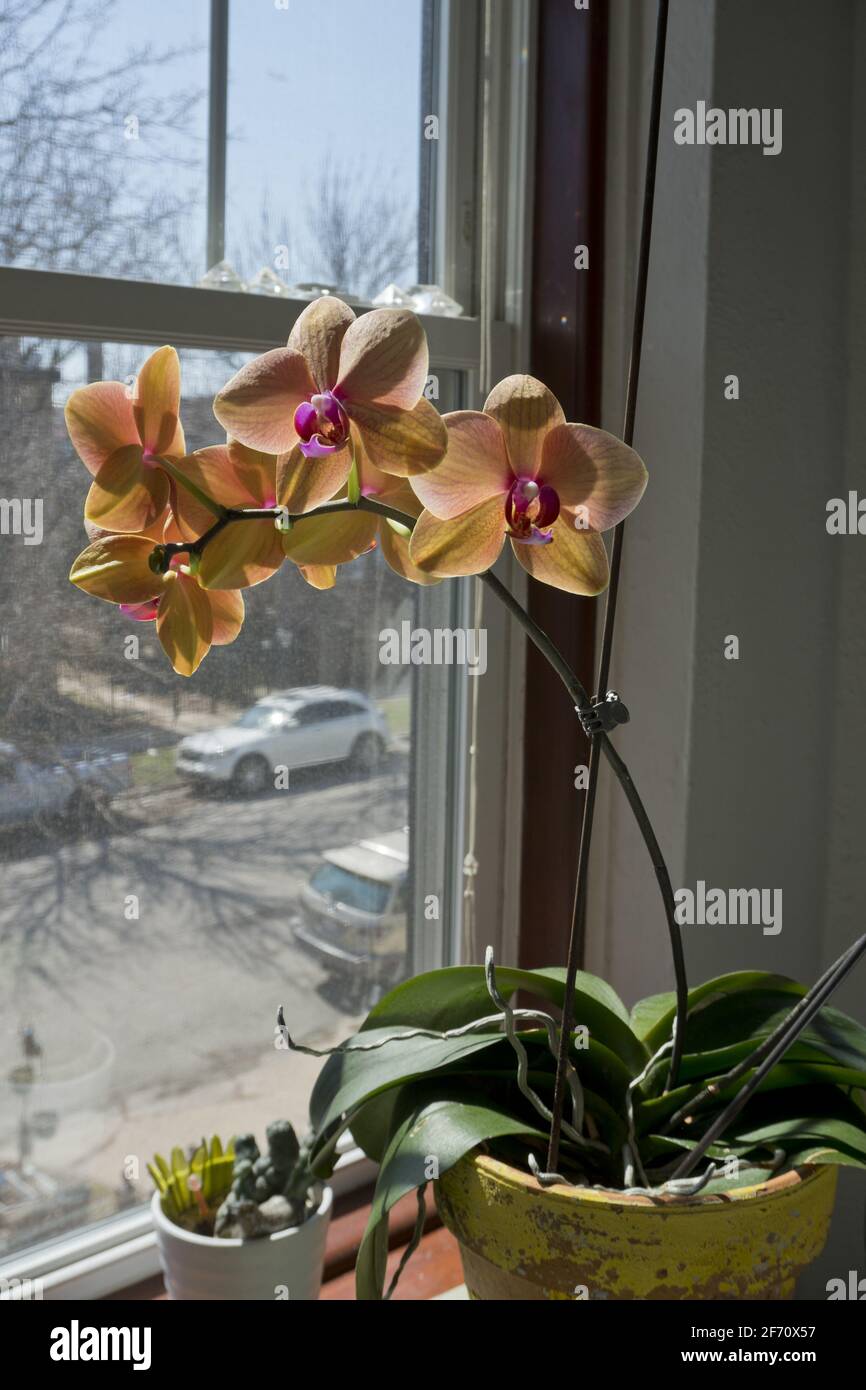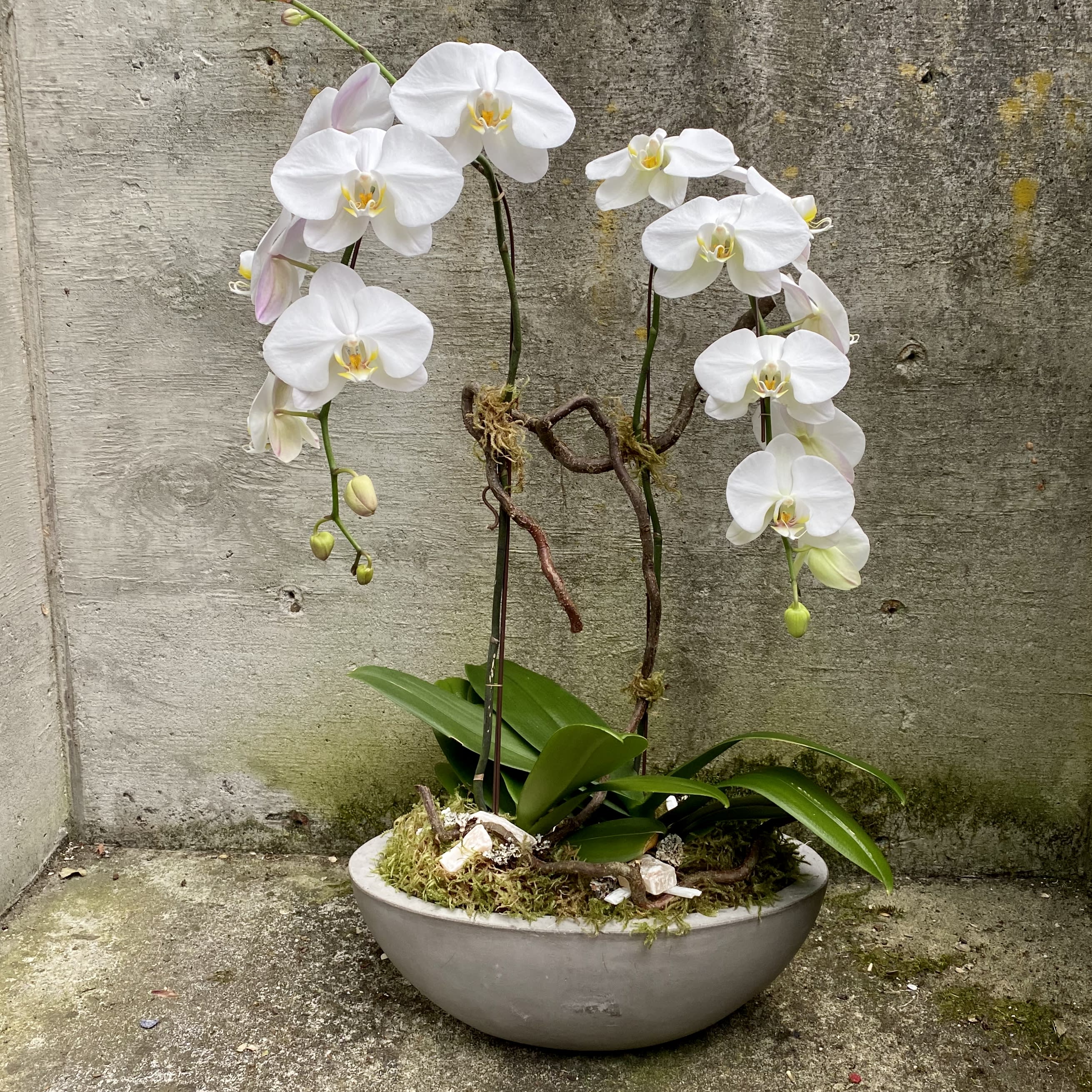Understanding the Lighting Needs of Your Phalaenopsis
Proper lighting is a crucial aspect of Phalaenopsis orchid care, and it’s essential to understand their specific needs to ensure healthy growth and blooming. One common misconception is that Phalaenopsis orchids require direct sunlight to thrive. However, this is not the case. In fact, direct sunlight can be detrimental to these delicate flowers. So, do Phalaenopsis orchids need sunlight? The answer is a resounding no, but they do require a specific type and amount of light. By understanding the lighting needs of your Phalaenopsis, you can significantly impact its health and blooming frequency. Providing the right amount of light can promote healthy growth, encourage blooming, and enhance the natural beauty of your orchid.
How to Provide the Right Amount of Light for Your Phalaenopsis
To provide the ideal lighting conditions for your Phalaenopsis orchid, it’s essential to understand the recommended intensity, duration, and type of light. Phalaenopsis orchids require bright, indirect light to photosynthesize and grow. A general rule of thumb is to provide 1,000 to 2,000 foot-candles of light, which is equivalent to an east- or west-facing window. In terms of duration, Phalaenopsis orchids need 10-12 hours of light per day. When it comes to the type of light, it’s crucial to avoid direct sunlight, which can cause damage to the leaves and roots. Instead, opt for filtered or dappled light, which can be achieved by using sheer curtains or placing the orchid near a shaded window. To assess the lighting in your home, observe the shadows and light patterns throughout the day. If the light is too intense, consider adjusting the position of your orchid or using light-filtering materials. By providing the right amount of light, you can promote healthy growth, encourage blooming, and enhance the natural beauty of your Phalaenopsis orchid.
The Dangers of Direct Sunlight for Phalaenopsis Orchids
While it’s a common misconception that Phalaenopsis orchids need direct sunlight to thrive, the reality is that direct sunlight can be detrimental to their health. Exposing Phalaenopsis orchids to direct sunlight can lead to a range of problems, including leaf scorch, root damage, and an increased risk of pests and diseases. When Phalaenopsis orchids are exposed to direct sunlight, the intense heat and light can cause the leaves to become scorched and discolored, leading to a decline in the overall health of the plant. Additionally, direct sunlight can cause the roots to become overheated, leading to root damage and reducing the plant’s ability to absorb water and nutrients. Furthermore, direct sunlight can create an ideal environment for pests and diseases to thrive, further compromising the health of the Phalaenopsis orchid. It’s essential to understand that Phalaenopsis orchids do not need direct sunlight and that providing indirect sunlight or filtered light is a much safer and healthier option for these delicate flowers.
The Benefits of Indirect Sunlight for Phalaenopsis Orchids
While it’s essential to avoid direct sunlight for Phalaenopsis orchids, providing indirect sunlight can have numerous benefits for these delicate flowers. Indirect sunlight, which is filtered or dappled, promotes healthy growth, encourages blooming, and enhances the natural beauty of Phalaenopsis orchids. When Phalaenopsis orchids receive the right amount of indirect sunlight, they are able to undergo photosynthesis, producing the energy they need to thrive. This, in turn, can lead to stronger, more vibrant plants that are more likely to produce beautiful blooms. Additionally, indirect sunlight can help to prevent common problems associated with direct sunlight, such as leaf scorch and root damage. By providing indirect sunlight, Phalaenopsis orchid owners can create an ideal environment for their plants to flourish, and do phalaenopsis orchids need sunlight? The answer is, they need indirect sunlight, not direct sunlight. By understanding the importance of indirect sunlight, Phalaenopsis orchid owners can take the first step towards creating a thriving and beautiful plant.
East- vs. West-Facing Windows: What’s Best for Your Phalaenopsis?
When it comes to placing Phalaenopsis orchids near windows, many owners wonder whether east- or west-facing windows are best. The answer lies in understanding the unique characteristics of each window direction and how they impact the lighting conditions for Phalaenopsis orchids. East-facing windows receive gentle, indirect sunlight in the morning, which is ideal for Phalaenopsis orchids. This type of light is soft and warm, promoting healthy growth and encouraging blooming. Additionally, east-facing windows tend to be cooler and more humid, which can help to maintain the ideal temperature and humidity levels for Phalaenopsis orchids. On the other hand, west-facing windows receive direct sunlight in the afternoon, which can be too intense for Phalaenopsis orchids. Direct sunlight can cause leaf scorch, root damage, and increase the risk of pests and diseases. However, if you do have a west-facing window, you can still use it by providing shade or filtering the light to create a more suitable environment for your Phalaenopsis orchid. Ultimately, the key is to understand that do phalaenopsis orchids need sunlight? They need indirect sunlight, and east-facing windows can provide the perfect conditions for them to thrive.
Artificial Lighting Options for Phalaenopsis Orchids
While natural light is ideal for Phalaenopsis orchids, it’s not always possible to provide the right amount of indirect sunlight. Fortunately, artificial lighting options can provide a suitable alternative. LED grow lights, for example, offer a energy-efficient and cost-effective solution. They produce a specific spectrum of light that is tailored to the needs of Phalaenopsis orchids, promoting healthy growth and encouraging blooming. Fluorescent lights are another popular option, providing a soft and gentle light that is easy on the eyes. However, they may not be as energy-efficient as LED lights and can produce heat, which can be detrimental to Phalaenopsis orchids. Other artificial light sources, such as HPS (High Pressure Sodium) and CFL (Compact Fluorescent Light) bulbs, can also be used, but they may not be as effective as LED or fluorescent lights. When using artificial lighting, it’s essential to consider the intensity and duration of the light, as well as the distance between the light source and the Phalaenopsis orchid. By doing so, you can create an ideal environment for your Phalaenopsis orchid to thrive, even in the absence of natural light. Remember, do phalaenopsis orchids need sunlight? They need indirect sunlight, and artificial lighting can provide a suitable alternative.
Monitoring Your Phalaenopsis Orchid’s Response to Light
Once you’ve provided your Phalaenopsis orchid with the right amount of light, it’s essential to monitor its response to ensure it’s receiving the optimal amount. Observe your orchid’s leaves, stems, and flowers for signs of too much or too little light. If your Phalaenopsis orchid is receiving too much light, it may exhibit signs such as yellowing or browning leaves, scorched flowers, or a general decline in health. On the other hand, if it’s not receiving enough light, it may display signs such as weak and spindly growth, pale or washed-out colors, or a lack of blooming. By regularly monitoring your Phalaenopsis orchid’s response to light, you can make adjustments to its lighting conditions to ensure it’s receiving the ideal amount. Remember, do phalaenopsis orchids need sunlight? They need indirect sunlight, and monitoring their response to light is crucial in providing them with the right amount. By doing so, you can create an environment that promotes healthy growth, encourages blooming, and enhances their natural beauty.
Optimizing Your Phalaenopsis Orchid’s Environment for Healthy Growth
While lighting is a crucial aspect of Phalaenopsis orchid care, it’s essential to balance it with other environmental factors to create an ideal environment for your orchid to thrive. Temperature, humidity, and watering all play a critical role in promoting healthy growth and encouraging blooming. By understanding the specific needs of your Phalaenopsis orchid, you can adjust these factors to create a harmonious environment that supports its growth. For example, Phalaenopsis orchids prefer daytime temperatures between 65-75°F (18-24°C) and nighttime temperatures around 55-65°F (13-18°C). They also thrive in humid environments, typically between 40-70% relative humidity. Additionally, proper watering techniques, such as watering once a week in the summer and once every 10-14 days in the winter, can help prevent root rot and ensure your orchid receives the right amount of moisture. By balancing these environmental factors with the right amount of light, you can create an environment that promotes healthy growth, encourages blooming, and enhances the natural beauty of your Phalaenopsis orchid. Remember, do phalaenopsis orchids need sunlight? They need indirect sunlight, and balancing it with other environmental factors is key to their success.







